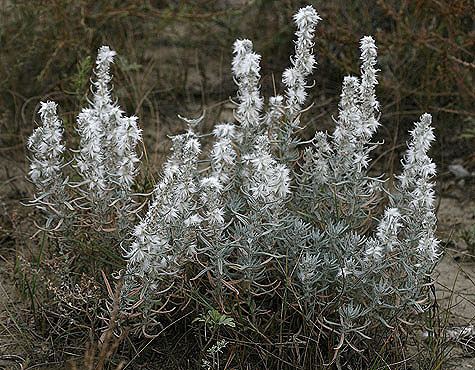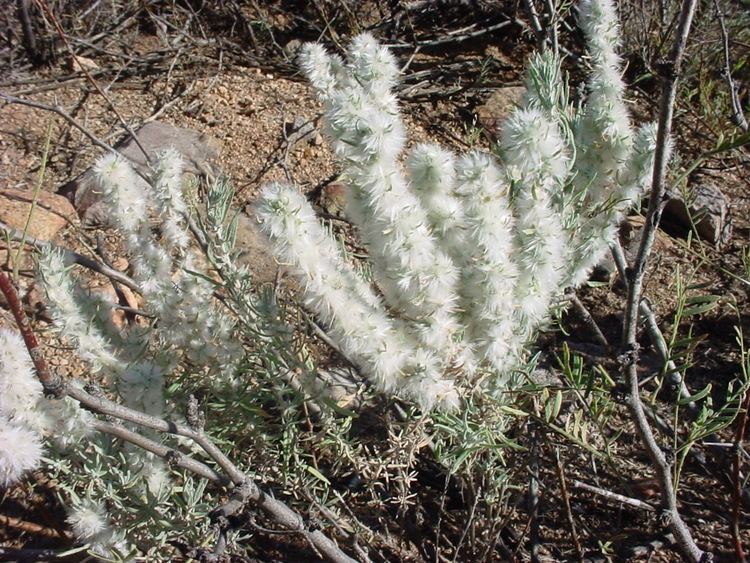Scientific name Krascheninnikovia | Tribe Axyrideae Rank Genus | |
 | ||
Similar Krascheninnikovia lanata, Krascheninnikovia ceratoides, Axyris, Grayia, Cycloloma | ||
Krascheninnikovia ceratoides
Krascheninnikovia is a genus of flowering plants in the Chenopodioideae subfamily of amaranth family known generally as winterfat. They are known from Eurasia and western North America. These are hairy perennials or small shrubs which may be monoecious or dioecious. They bear spike inflorescences of woolly flowers.
Contents

Description

The species of Krascheninnikovia are erect subshrubs or shrubs. The plants are densely covered with dendroid stellate hairs and additionally with simple, unbranched hairs. The alternate leaves stand solitary or grouped in fascicles, and can be petiolate or nearly sessile. The flat, non-fleshy leaf blades are linear to narrowly lanceolate to ovate, with entire margins, and truncate, cuneate, rounded, or subcordate base.

The flowers are unisexual, the plants can be monoecious or dioecious. Male flowers form an interrupted spike or subcapitate inflorescence of glomeruled, ebracteate flowers. These consist of 4 basally connate perianth segments, that are ovate or elliptic, membranous and abaxially hairy; and 4 stamens with oblong anthers and linear, exserted filaments. Female flowers sitting single or paired axillary, enclosed by 2 hairy bracteoles, that are connate in the lower part, compressed to slightly keeled, with 4 hornlike tips; a perianth is missing, the female flowers consist just of an ovary with a short style and 2 elongated stigmas.

The hairy fruit enclosed by the bracteoles is ovate and compressed, its membranous pericarp is free from the seed. The vertically orientated seed has a brown thin seed coat covered with white hairs. The embryo is nearly annular or horseshoe-shaped and encloses the copious perisperm.
The chromosome base number is x=9, for example 2n=36 for Krascheninnikovia ceratoides, 2n=18 and 2n=36 for Krascheninnikovia lanata.
Distribution
The species of Krascheninnikovia are mostly distributed in Eurasia, two species occur in North America. In Europe, Krascheninnikovia ceratoides is the only species, it is native in eastern and southern Europe.
Systematics
Krascheninnikovia has been first described in 1772 by Johann Anton Güldenstädt (in: Novi Commentarii Academiae Scientiarum Imperalis Petropolitanae, 16, p. 551). The genus was named for the Russian botanist and explorer of Siberia and Kamchatka, Stepan Krasheninnikov. The type species is Krascheninnikovia ceratoides (L.) Gueldenst. The older name Ceratoides had to be rejected: it referred just to a pre-Linnaean description by Joseph Pitton de Tournefort, comprising the type of the related genus Ceratocarpus.
The genus Krascheninnikovia belongs to the Chenopodioideae subfamily of the family Amaranthaceae. After phylogenetic research, it was grouped into the tribe Axyrideae.
The genus includes about (3) 7 species:
